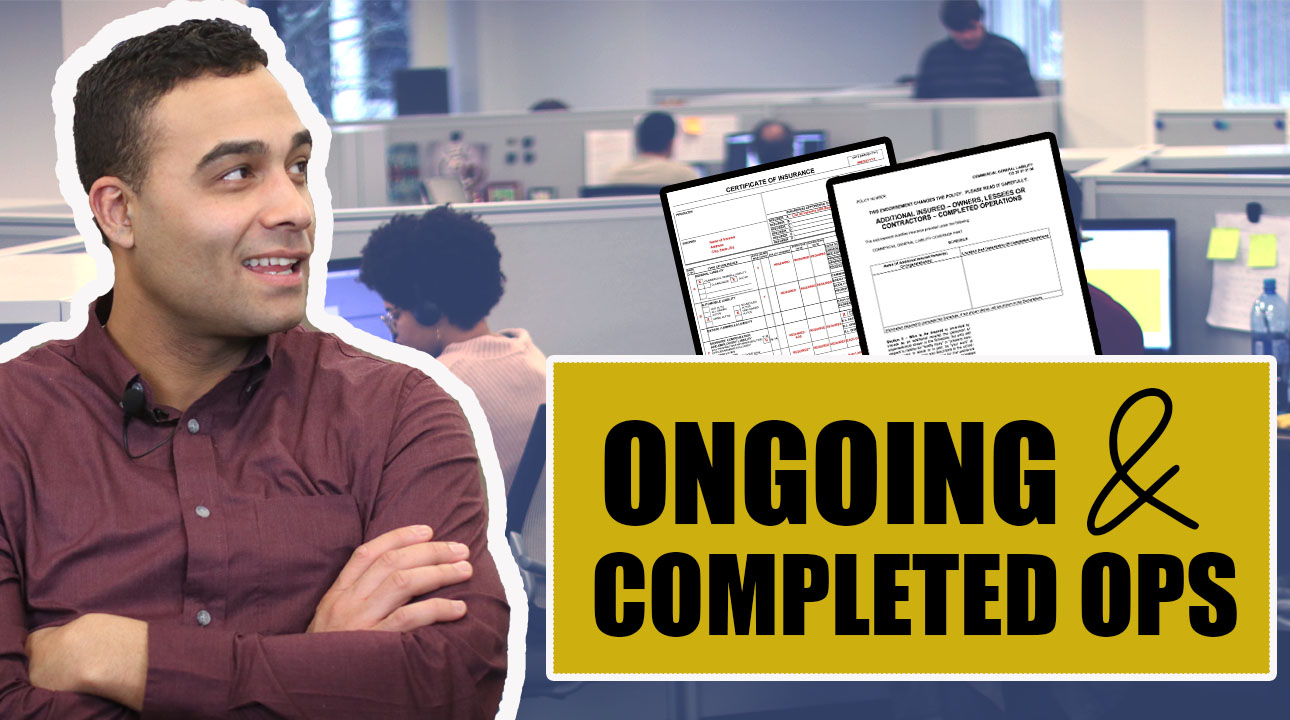
The Difference Between Ongoing and Completed Operations for Additional Insureds
A contractor that’s hired to do a job is required to present the client proof of insurance and will usually be asked to name the individual employing them as an additional insured on their general commercial liability (GCL) policy. This stipulation offers some protection to the contractor and their additional insureds if property damage or injury occurs. Adding endorsements can effect the coverage of the policies, so it is important to understand the difference between ongoing and completed operations endorsements.
The specific nature of the coverage depends heavily on the language used. One of the most important details to review is whether the endorsement offers protection for completed or ongoing operations.
When an endorsement refers to "completed operations," the contractor has a level of coverage that comes into affect after they have finished the work. In other words, if an issue materializes weeks or months after the job is completed (depending on the specifics of the policy), the provision may still provide coverage. Conversely, an endorsement of "ongoing operations" offers coverage only when a job is still in progress.
Minimizing Risk
Understanding the scope of ongoing vs. completed operations coverage may help contractors and sub-contractors with their risk management strategy.
This is particularly important, as the risks associated with a given project do not dissipate as soon as it is completed. In some cases, instances of negligence do not become apparent until weeks, months, or even years later. Businesses should still look to limit their liability in the event of future risk events, which is why many seek to have coverage for completed operations.
Below is a hypothetical scenario, which a business might experience, that illustrates the difference between ongoing and completed operations and emphasizes the potential implications of language used for each.
The Scenario
A painter gets hired by the building's landlord to paint a playroom located in the common area of the apartment building. Weeks after the job is completed, the ceiling paint starts to peel and flake onto the floor. An infant in the playroom swallows the paint chips and gets sick, resulting in a suit against the landlord. In this scenario, the landlord files a claim against the painter's policy.
The most likely outcome of this claim will depend on whether the policy included language for completed or ongoing operations.
Ongoing Operations
As the policy only included coverage while the work was being done, the insurance company denies the claim. The landlord now has to file the loss against his policy or pay the costs directly.
Completed Operations
The landlord's work agreement required the additional insured endorsement to include completed operations. This would offer coverage for the loss under the painter's policy.
In this scenario, the landlord would have benefited most from negotiating that the agreement covered completed operations.
While knowing the differences between ongoing and completed operations and the implications associated with those differences is critical to creating an appropriate agreement, it’s important to note that it is one of many details to review. The specifics of this clause, as well as other aspects of your coverage, will differ depending on a variety of factors, such as industry, location, and regulations. As such, it’s important to carefully review all aspects of your agreements and seek professional guidance before signing.
how bcs can help
Business Credentialing Services provides tools necessary to mitigate insurance risks and help understand these clauses, including ongoing operations and completed current operations. bcs's full-service solution includes a team of compliance analysts and the technology to track certificates of insurance through collection, error identification, review, and correction, while the self-service option features our easy-to-use software platform.
To learn more, contact us for more information.
Subscribe Now
Learn from the pros about risk-mitigation, document tracking, and more, with expert articles from bcs.






Leave a comment